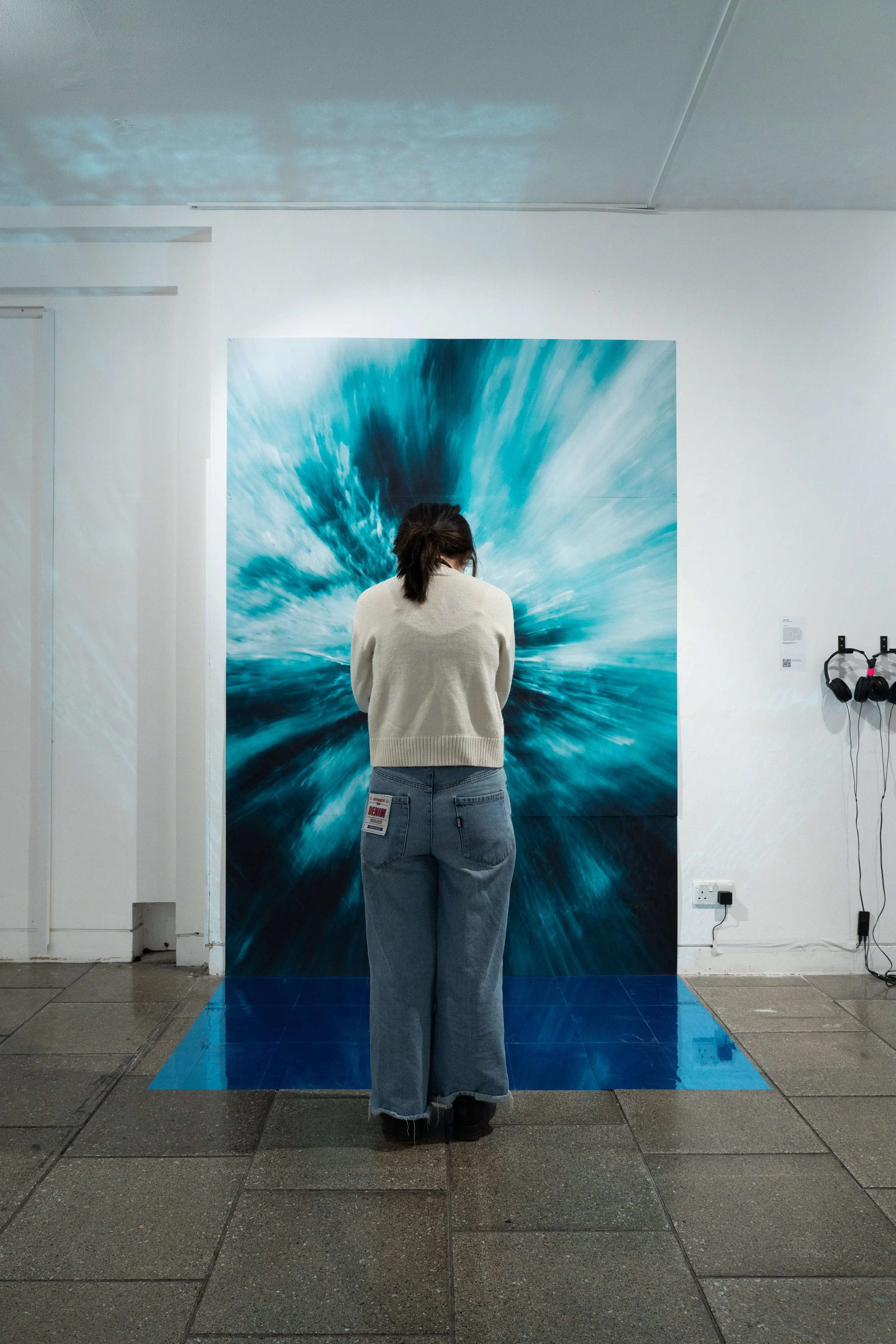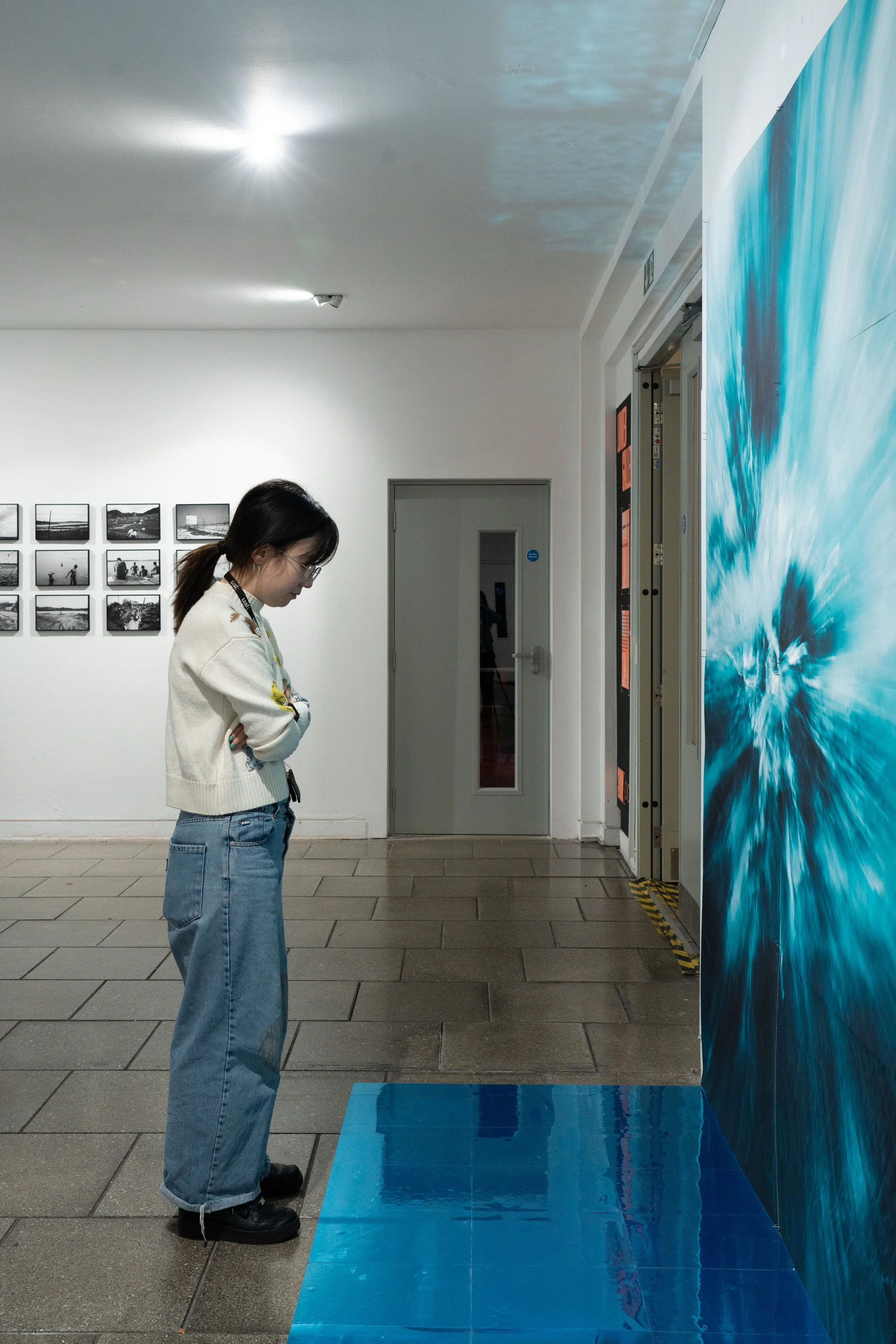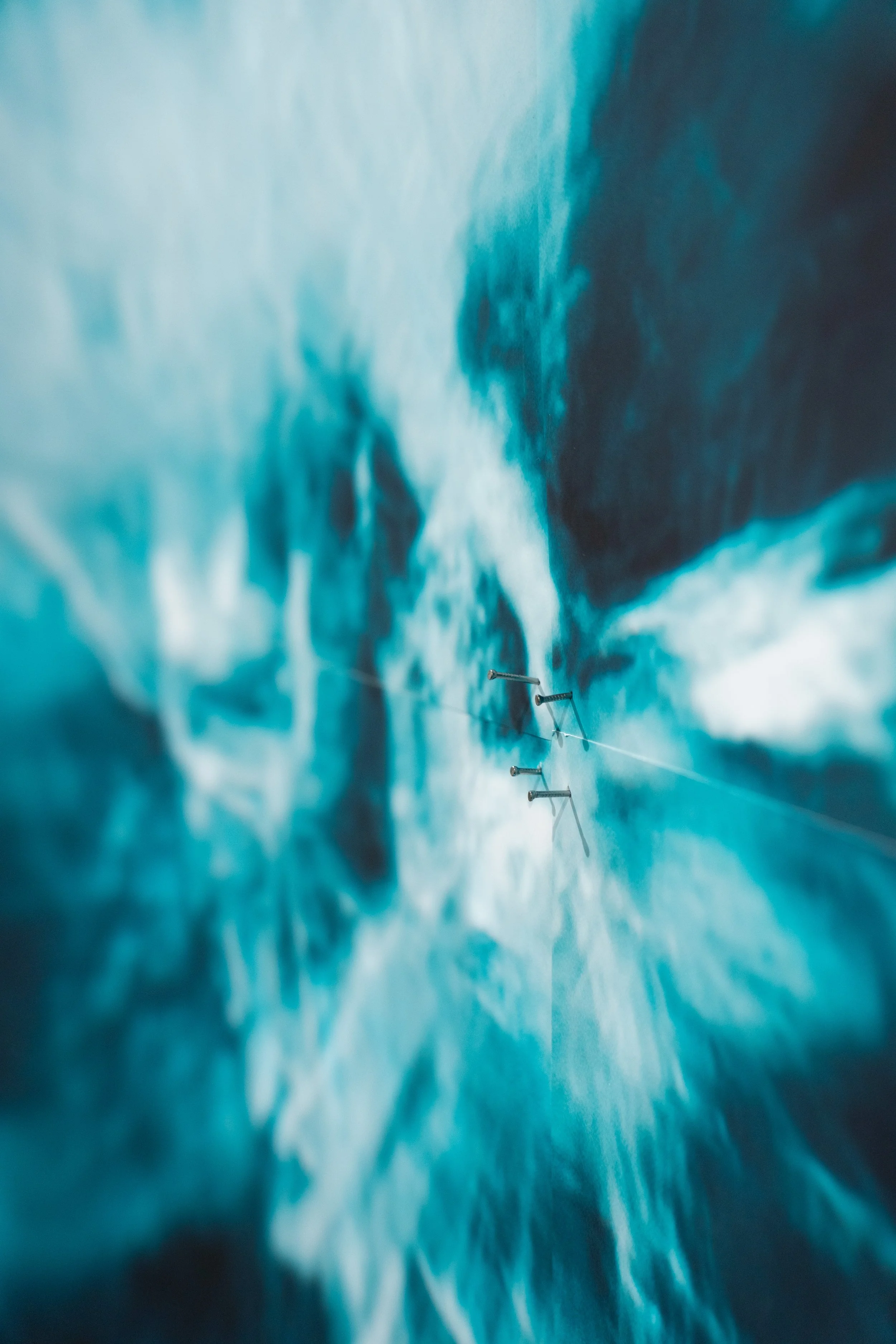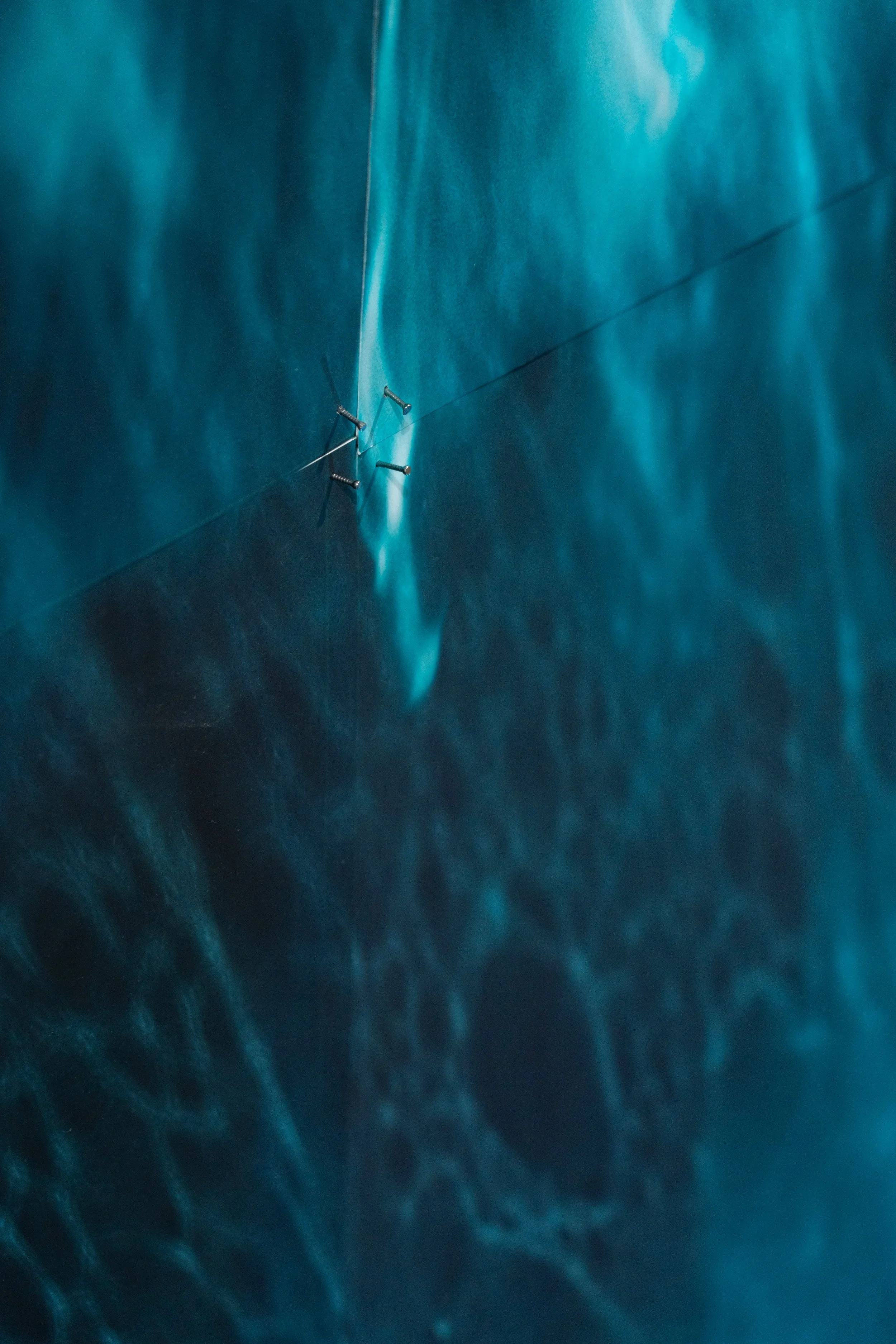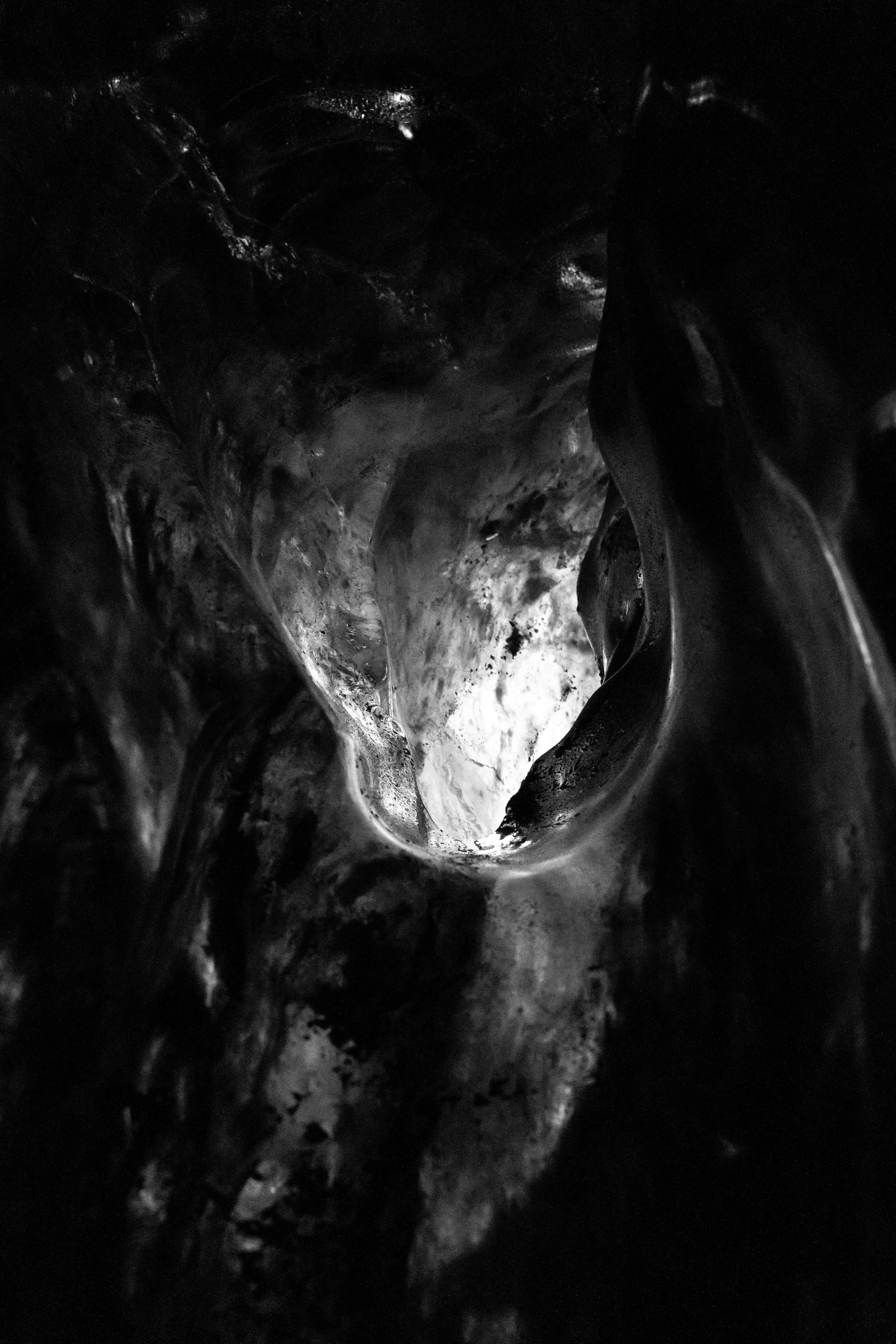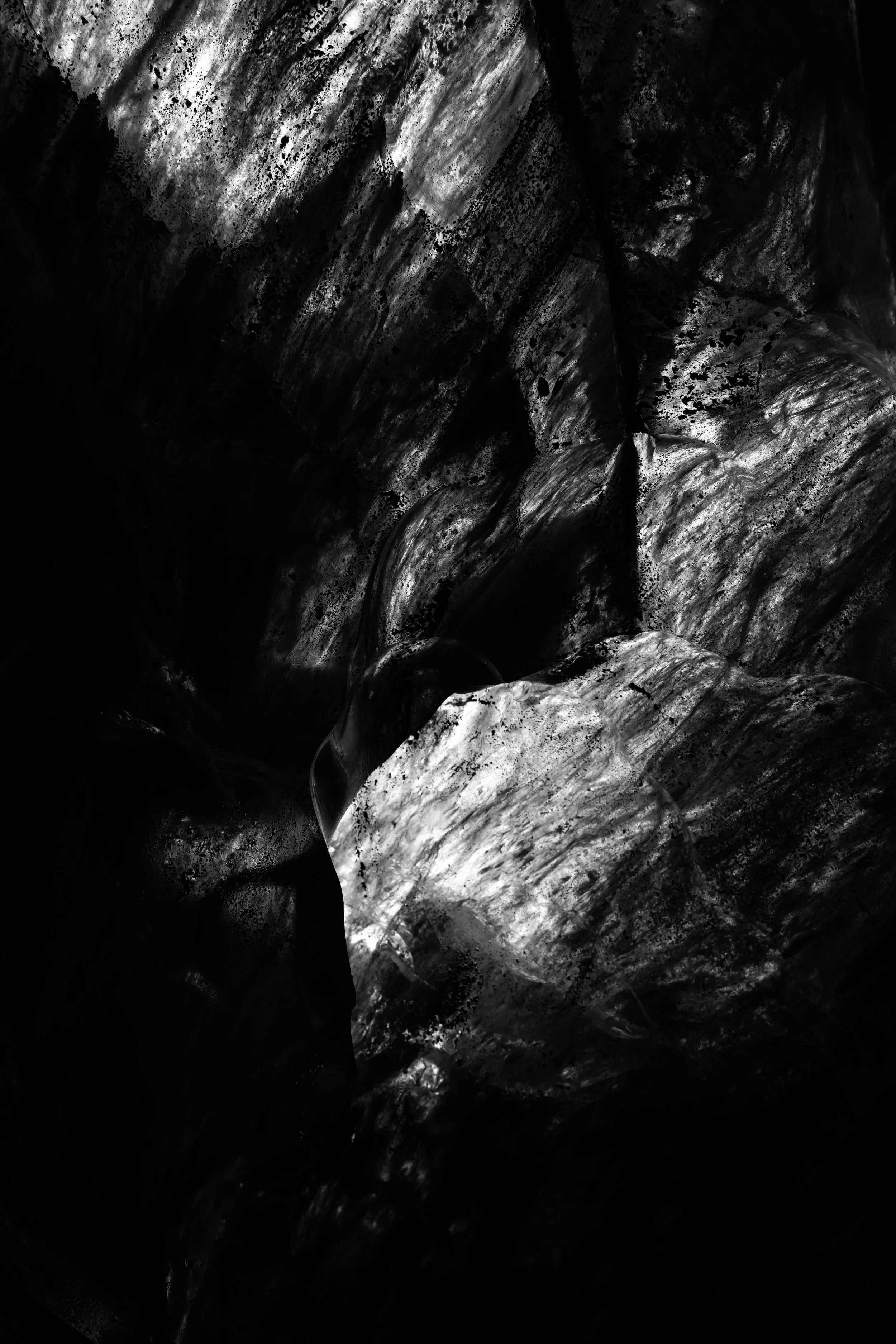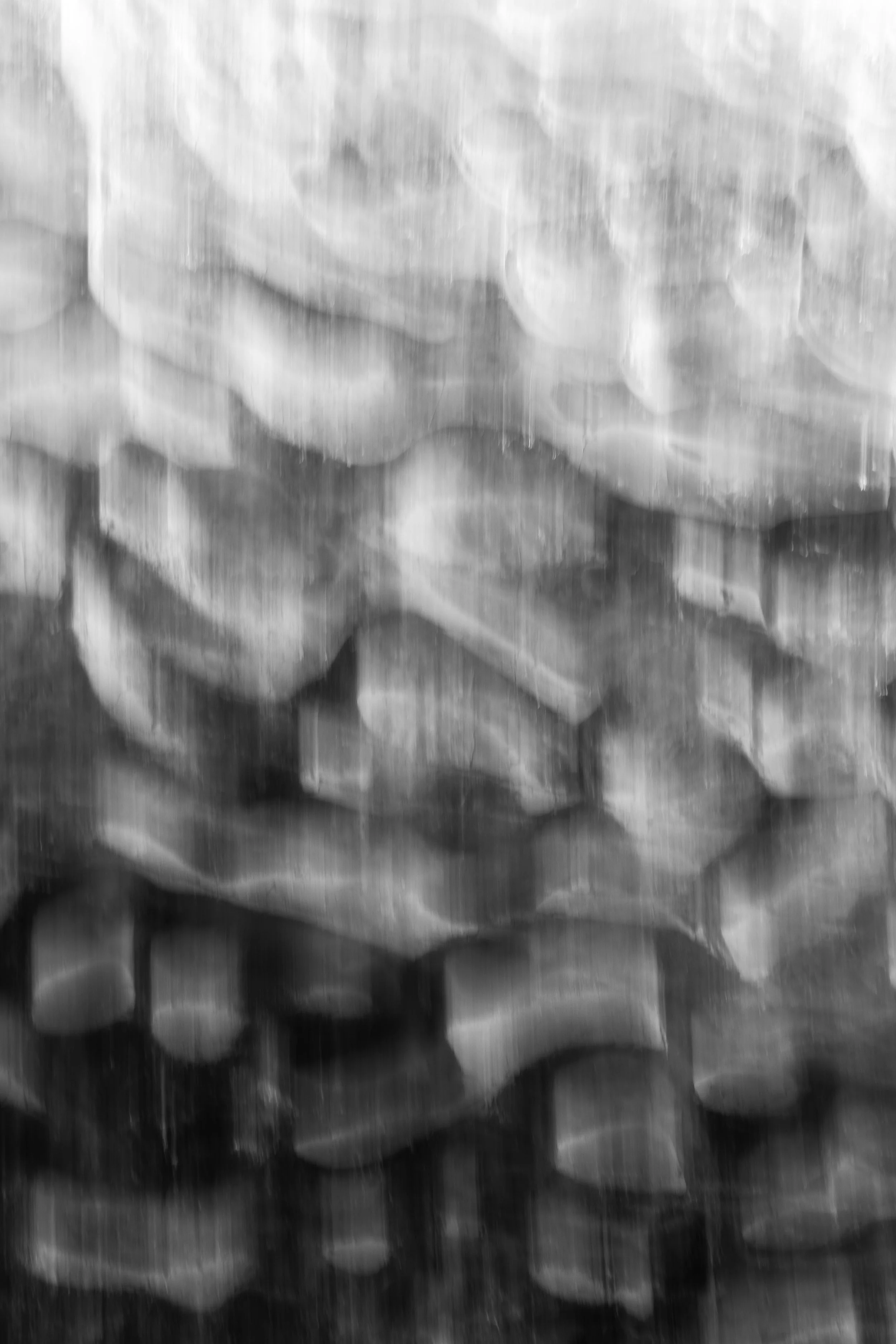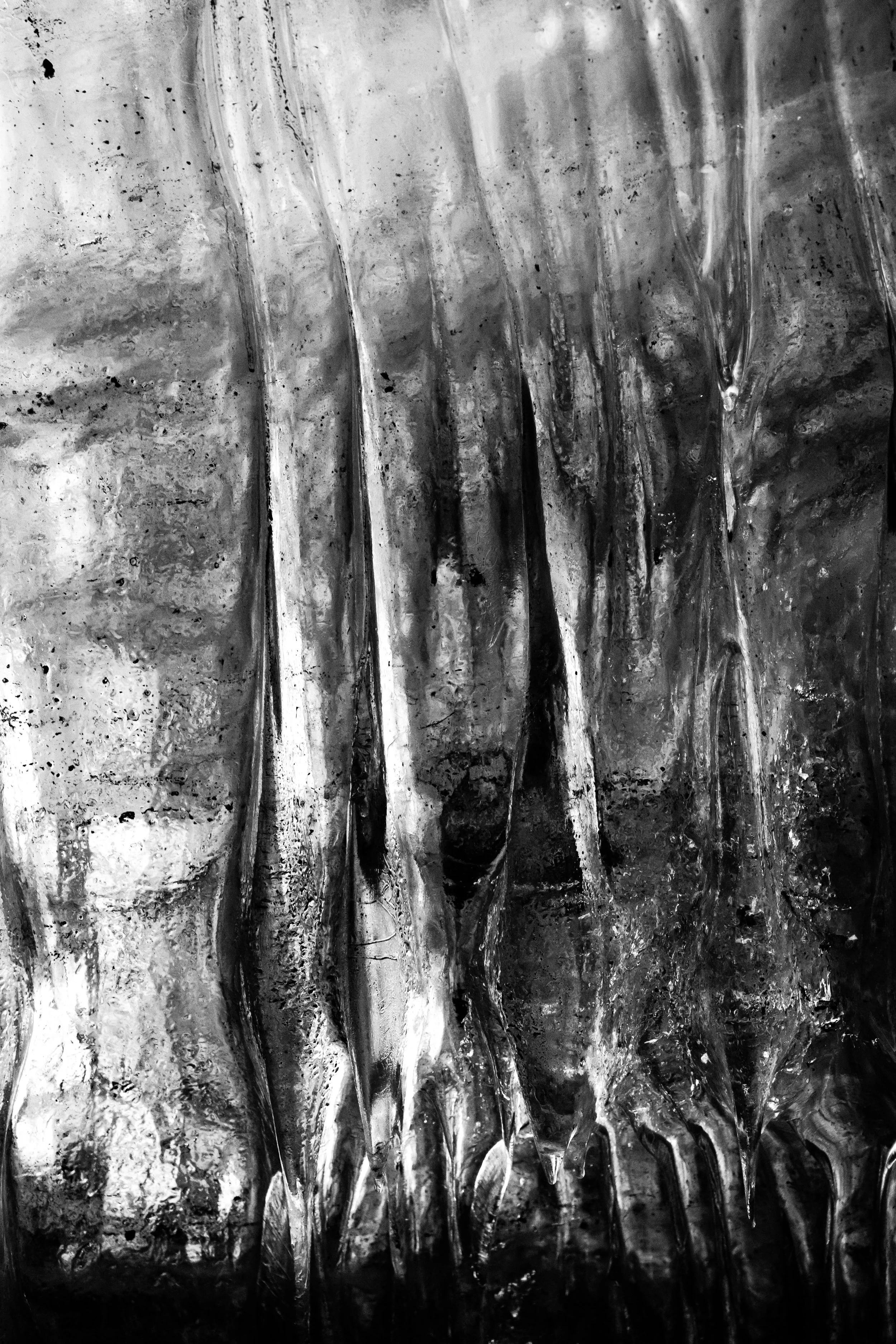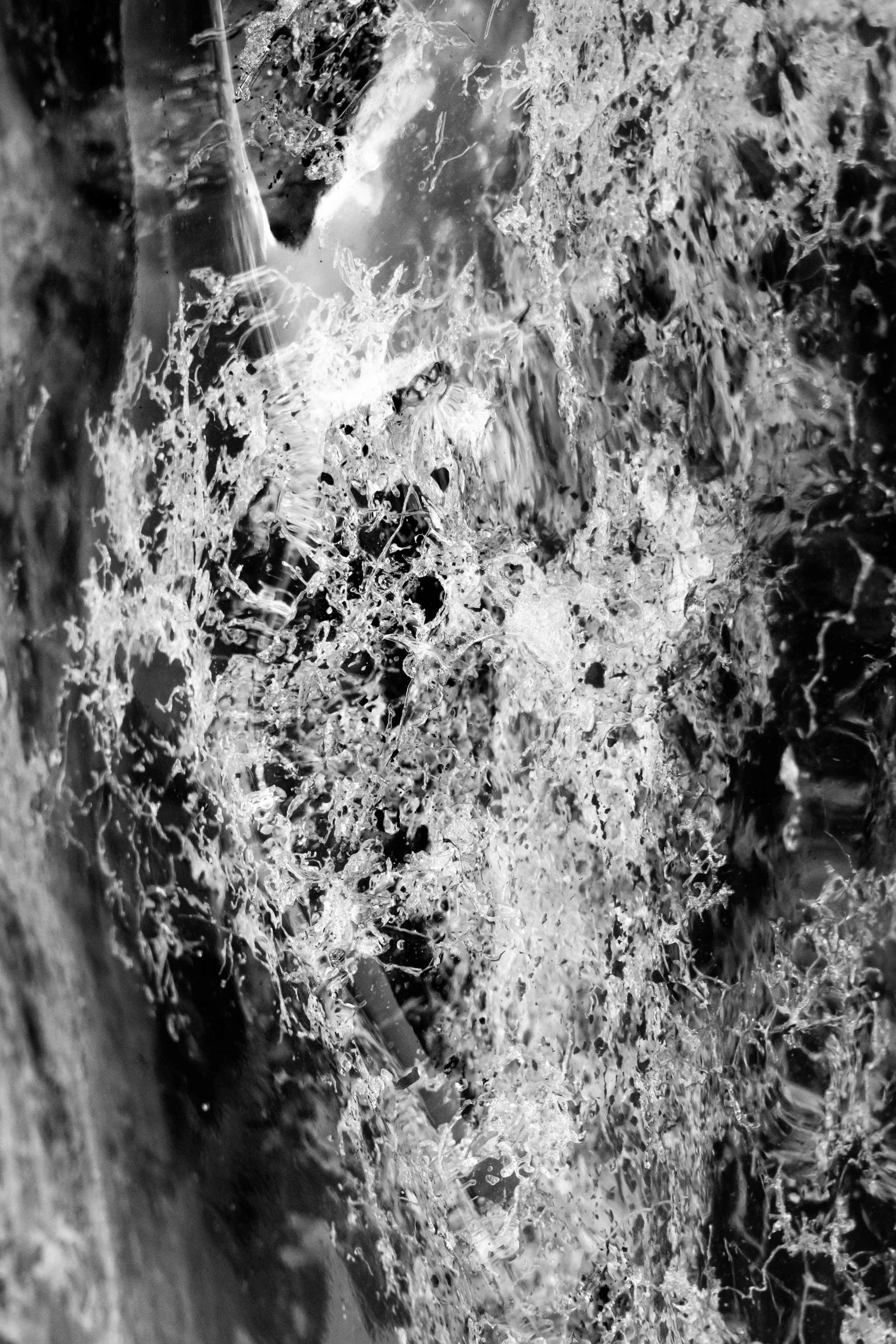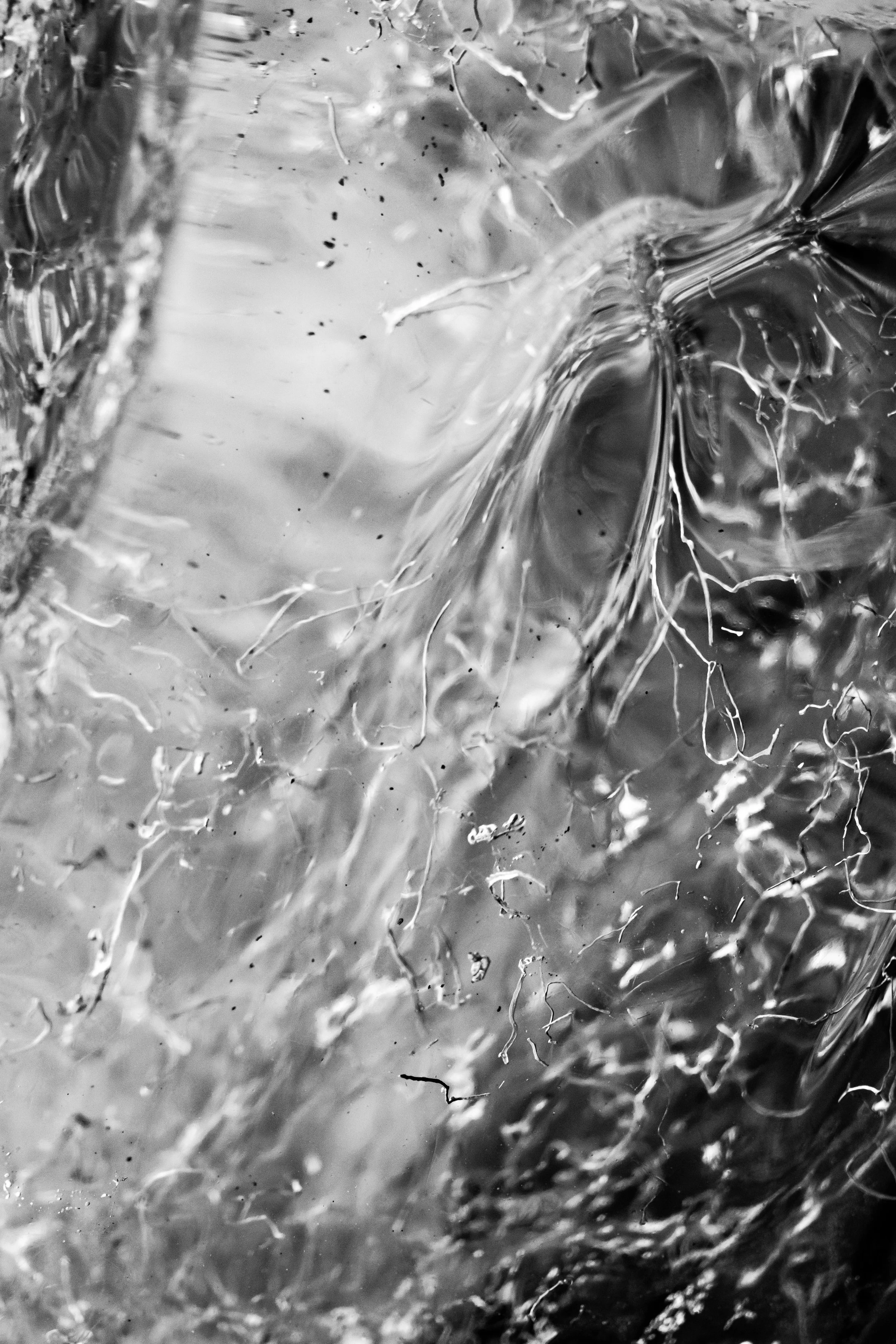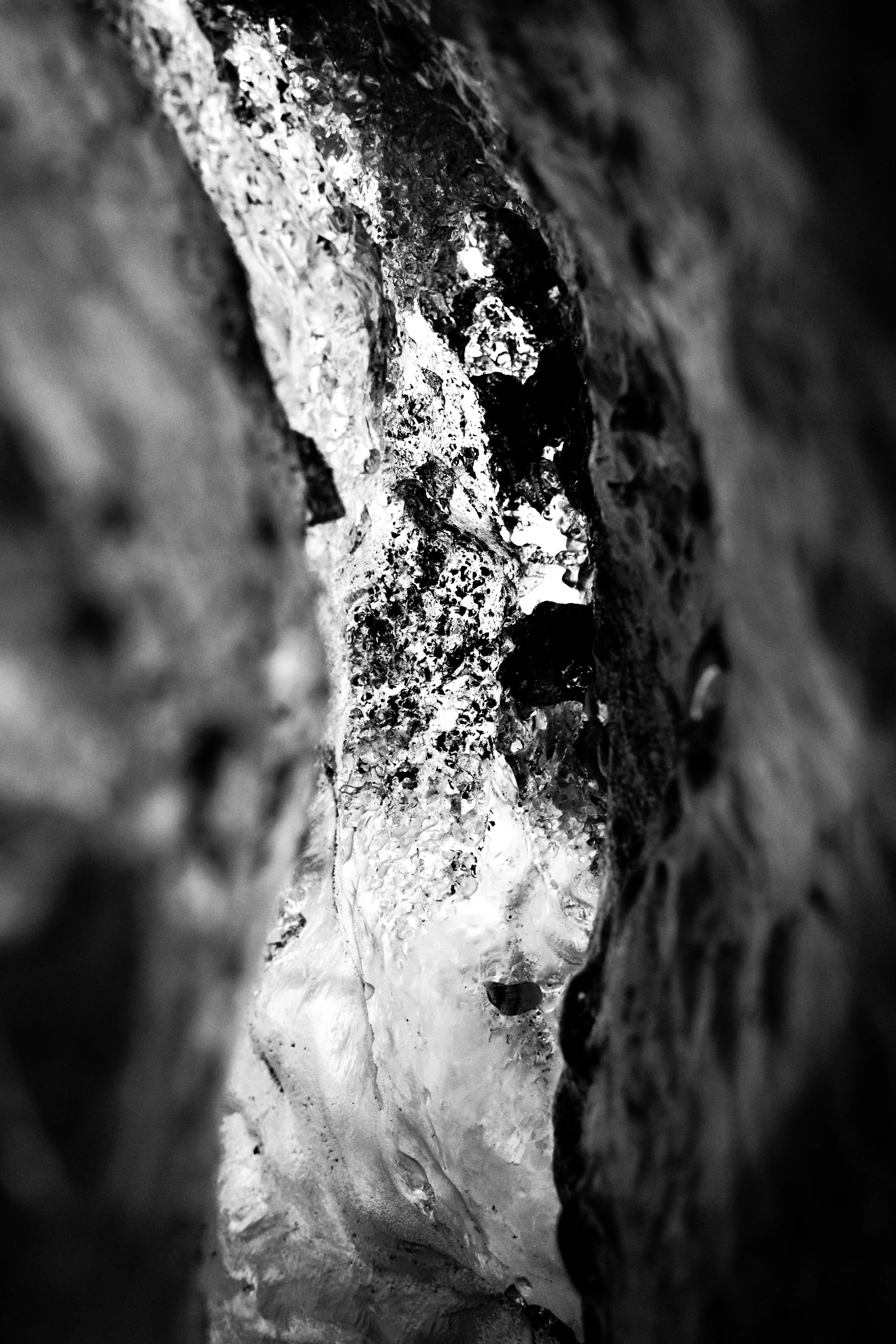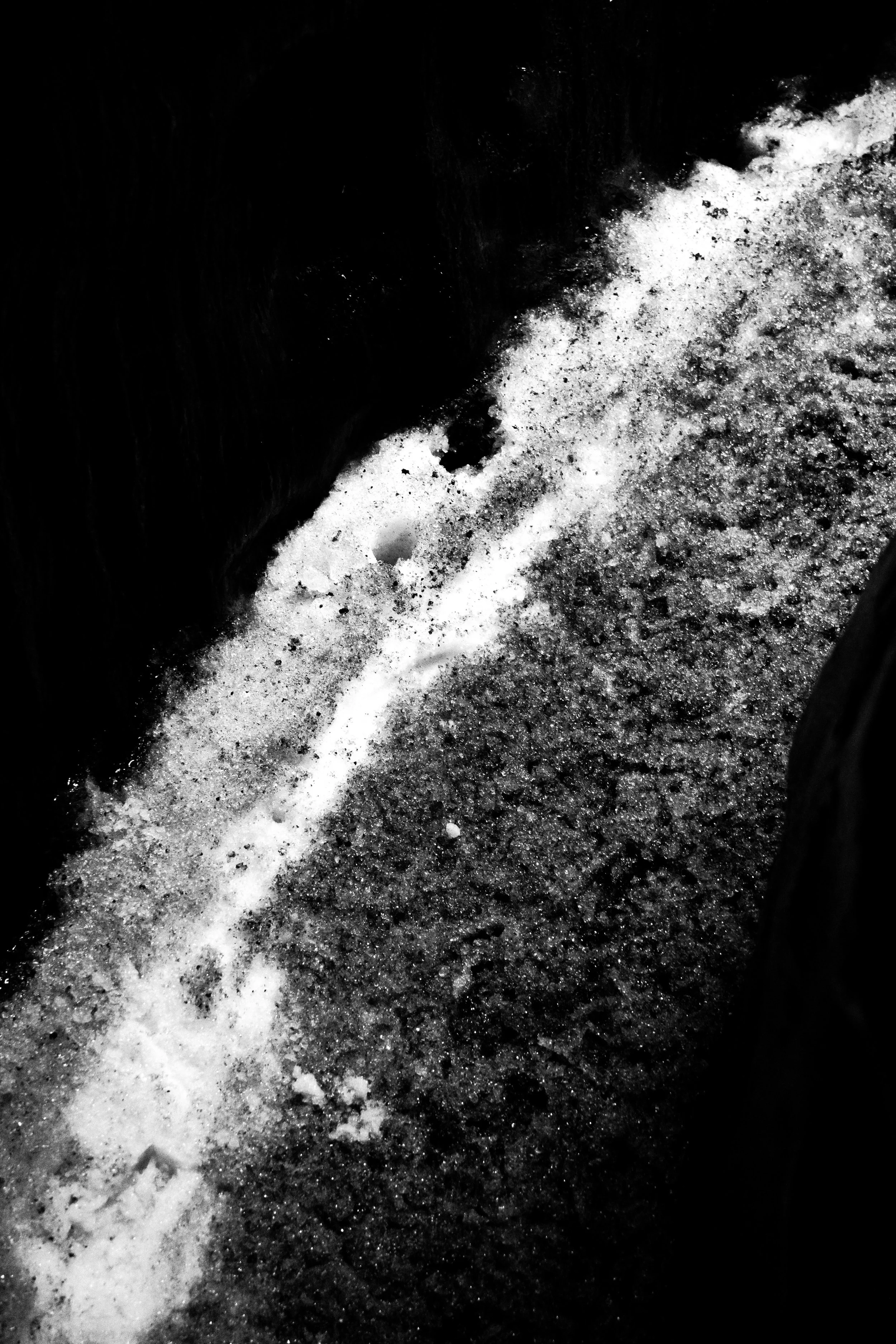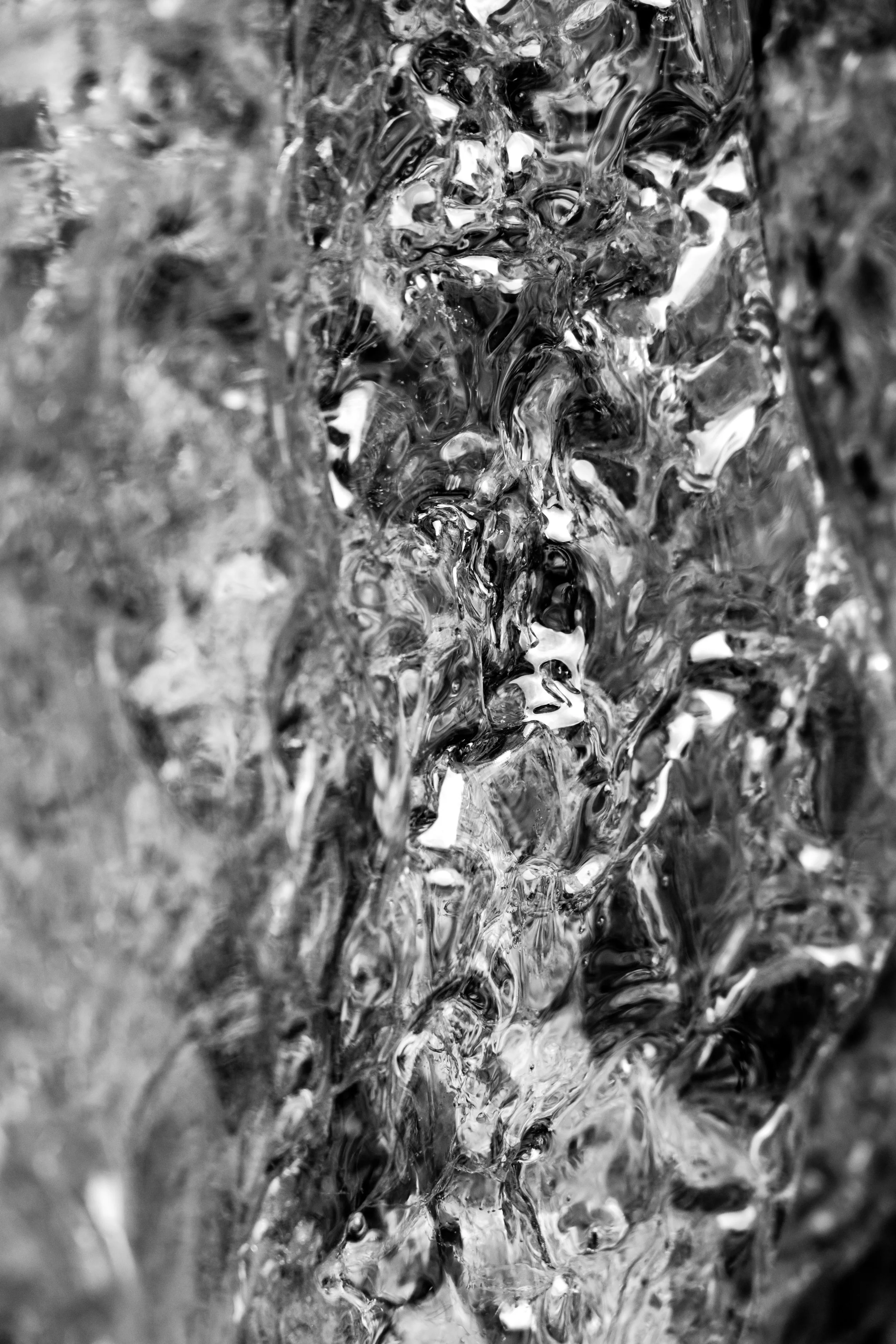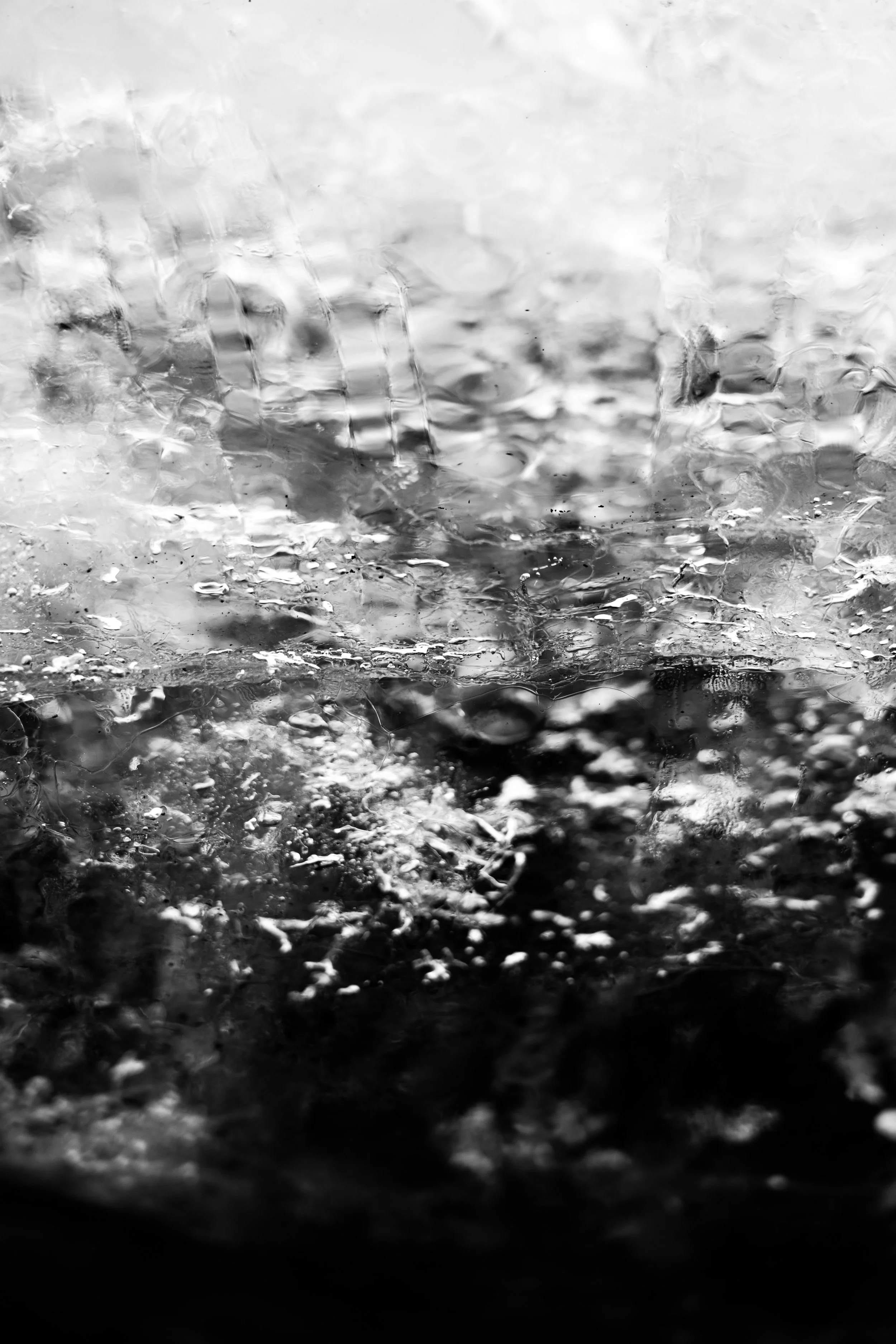A Long Breath
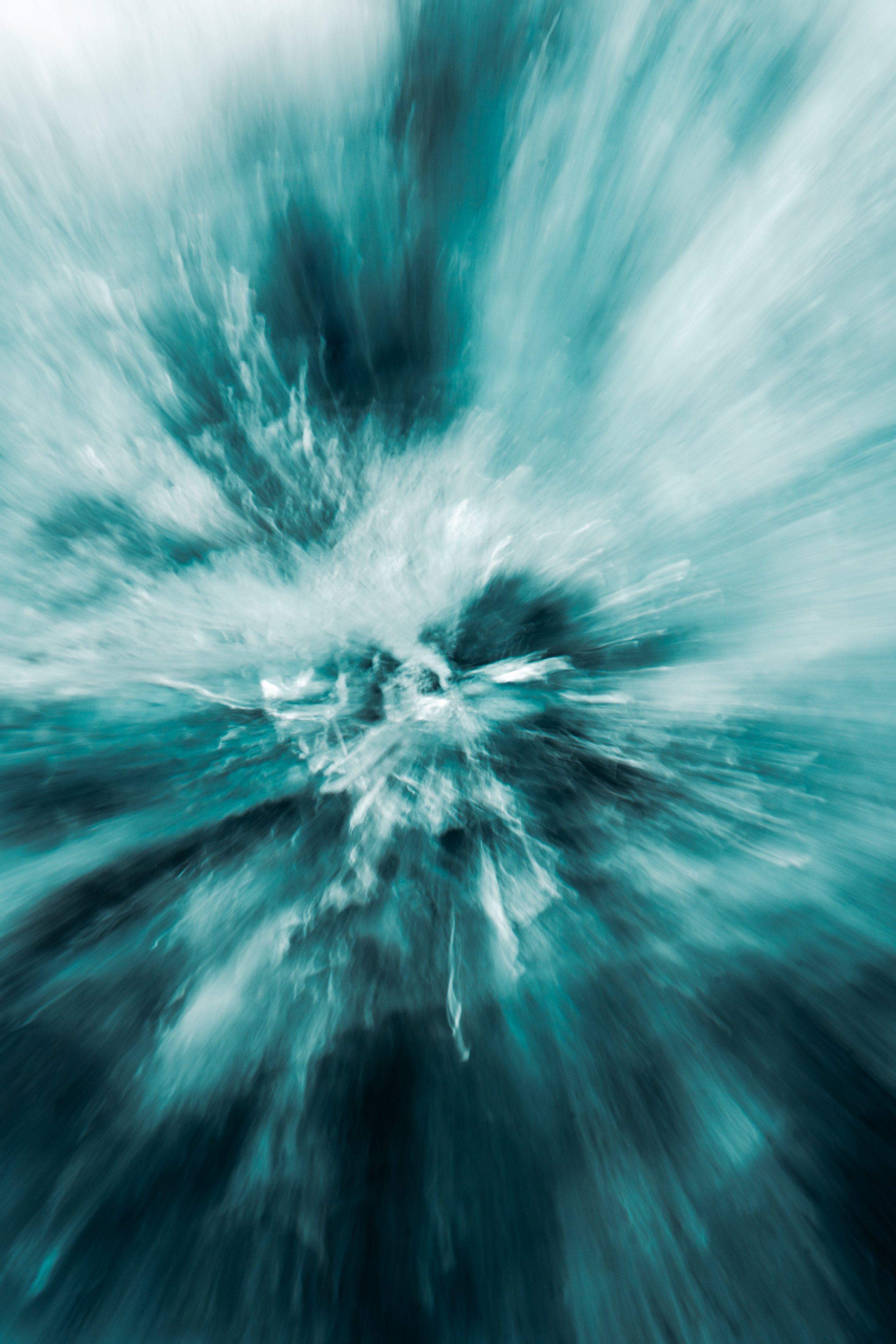
This project examines the transient nature of glaciers. We often view glaciers as static permanent objects. However, glaciers are living entities. They are immense organisms of monumental ice, moving under their weight, constantly accumulating, crawling, and breathing. Eventually, they melt to a certain mass and cease to move, ending their life cycle as a glacier. Because of the acceleration of the melting of glaciers, their lifespan begins to align with that of human beings. At the same time, they are memorialised like humans. In 2019, a funeral was held to commemorate the death of Iceland's Okjökull Glacier, helping people to cope with their grief.
These immense masses often remain intangible, as glaciers exist on a physical and geological scale different from human beings. Thus, they can only be viewed at a geographical distance for us to comprehend their magnitude. By relieving the audience from traditional landscape guides, such as horizons and vanishing points, the installation disorients the audience and creates a new perception of the glacier. The images penetrate the surface of the living glacier, allowing the audience to understand the glacier from its core, its heart.
The exhibited image is a fragmented publication that can be reconstructed as a book, inviting audiences to view the fragmented glacier from a different perspective while also recreating the installation in their own space. At the same time, it reminds the audience that the image is still constructed, it does not replace real glaciers, nothing can.
Project exhibited at LCC Postgraduate Showcase 2024:
This is the sound of the glacier melting and air bubbles releasing, recorded at Fjallsárlón lagoon in Iceland by Future Landscapes (2023). A hydrophone attached to a fishing rod was submerged in the lagoon. The sound is exhibited alongside the image in the show.
Field Recordist: Magnús Bergsson
Future Landscapes (2023). Fjallsárlón - 1 - Fjallsárlón Lagoon (Hydrophone). Available at: https://www.futurelandscapes.cz/en/melting-history.
Complete body of work:


